Ivy, or Hedera, is a creeping vine from the Araliev family. The birthplace of the flower is the subtropics of Europe, Asia, America and Africa. The evergreen perennial has gained popularity since time immemorial and does not lose it until now.
The ancient Greeks praised wreaths of ivy poets. The ancient Romans used it in magic rituals, laying the heder on the breasts of women. The medicinal properties of this plant are also known since ancient times and are used in our time.
In many homes, such a liana lives, because caring for it at home is quite simple. The plant is absolutely undemanding and, subject to the basic recommendations for care, any grower will cope with the cultivation. However, the cheder also has a negative side - children and animals should be protected from contact with it due to the toxicity of all its parts.
Content
Variety characteristics and types of home ivy with a description
The root system is developed, superficial. Stems are creeping, prone to branching. They have brushes of aerial roots on them, with the help of which ivy is attached to the support. In adult plants, the stems are lignified. They can reach up to 15-20 m in length.
The leaves are simple, alternate, lobed. The texture is leathery. The surface of the plates is smooth, glossy. In most species, the color is dark green with a light skeleton of the veins. There are a small number of variegated species.
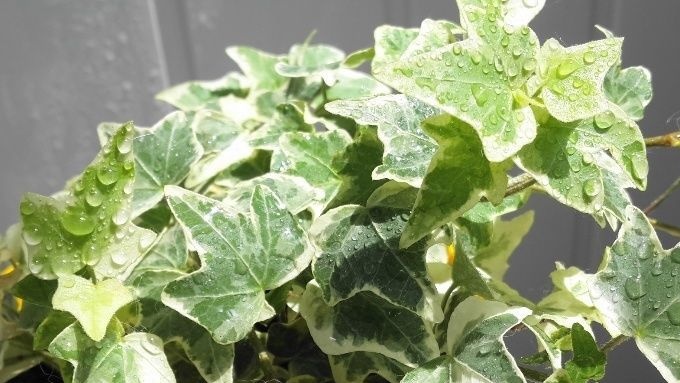
Small yellow-green flowers are collected by inflorescences. At home, achieving ivy flowering is almost impossible. But if a miracle happened, and the plant bloomed, experts recommend getting rid of inflorescences. Not only are the flowers and berries of the heder poisonous, they also emit a very specific smell.
To date, more than 100 species of this plant are known. The most common types of indoor ivy are not so many, each of them has a decorative value.
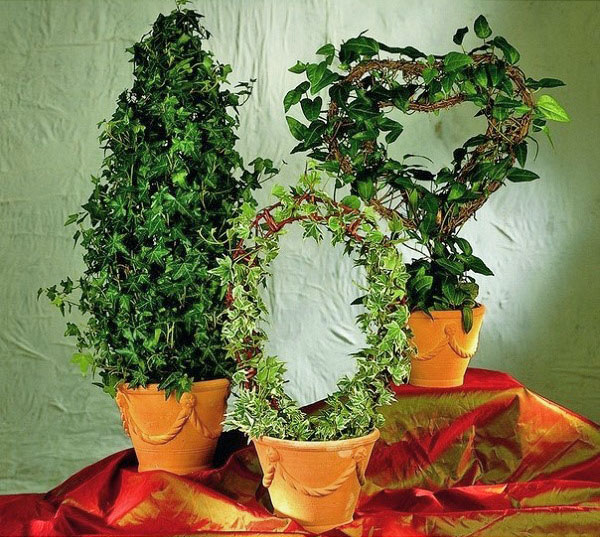
Ordinary ivy, presented in the photo - the most popular type in indoor floriculture. Of particular interest are the following varieties:
- Hummingbird - a miniature flower with white-green leaves.
- Eva and Mona Lisa differ in almost yellow leaves.
- Anniversary - ivy with spotty leaves.
- Ivalace is distinguished by corrugated sheets.
- Harald has almost round leaves.
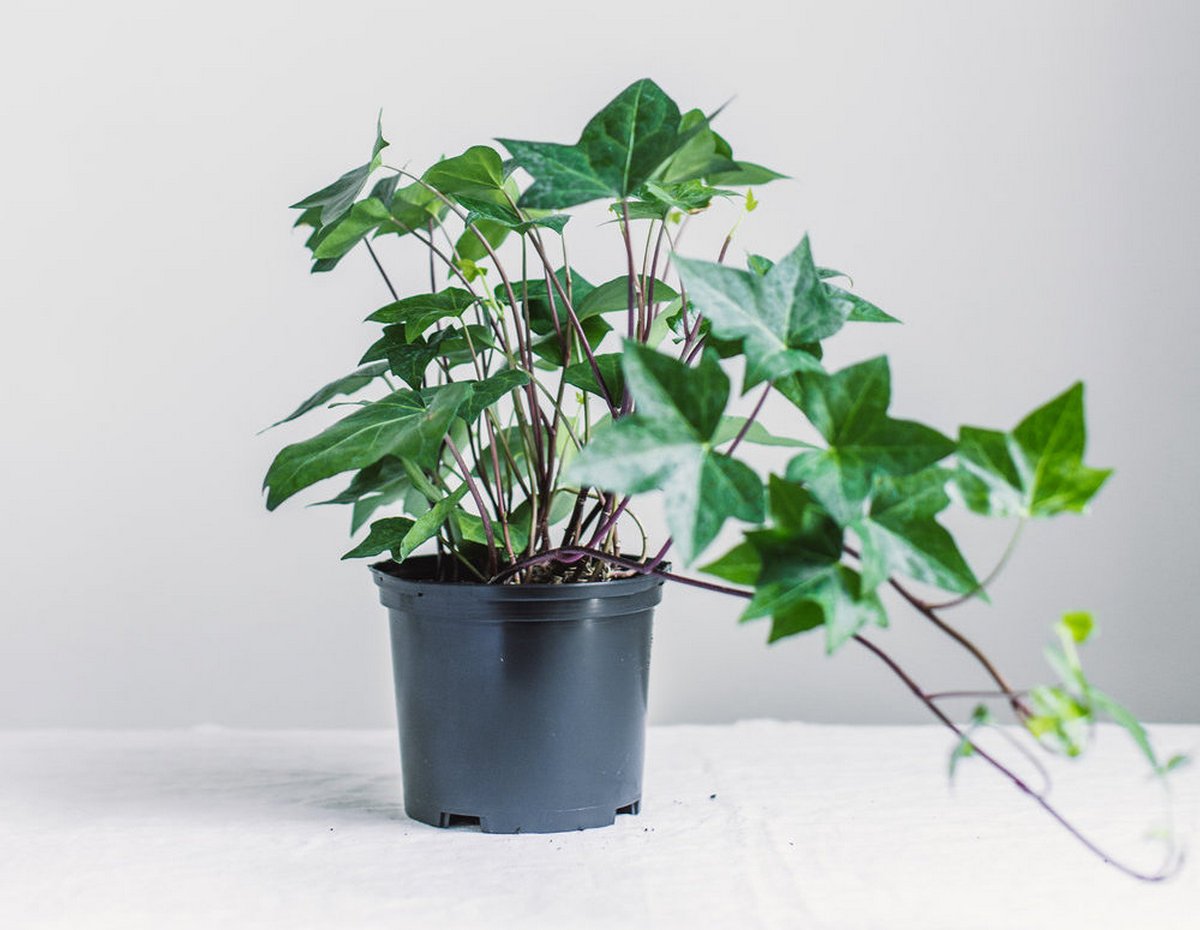
Colchis species is represented by such hybrids:
- Varyegata dentata is characterized by oval leaves with pale yellow edges.
- Salfer Hard is distinguished by wrapped light green leaves with yellow-green veins.
- The tree has drooping shoots with oval leaves.
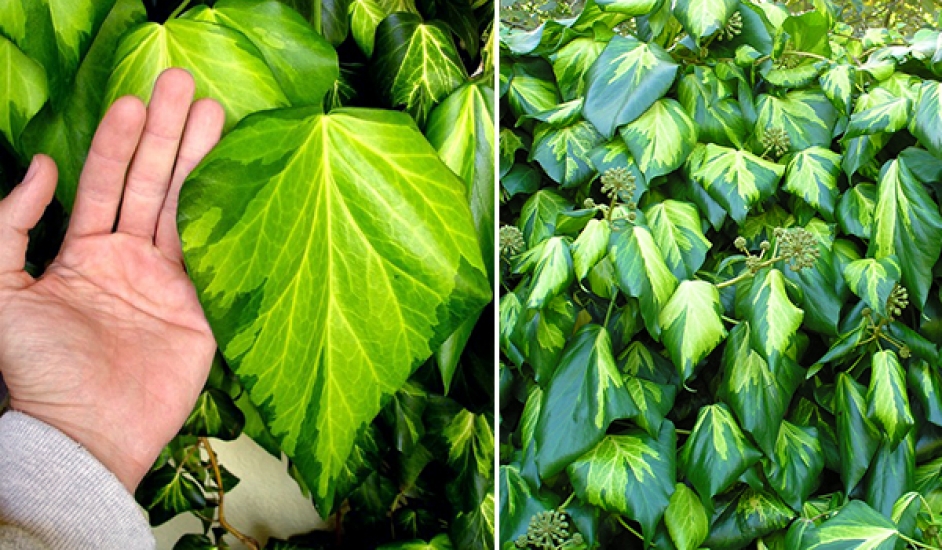
Representatives of the Colchis species are distinguished by larger leaf plates, from which a pleasant muscat aroma comes.
The following hybrids belong to the Canary species:
- Glory de Marengo has reddish stems.
- The striate has light yellowish spots in the middle of the leaf plates.
- Gold leaf - two-tone ivy, which in the sun acquires a golden hue.
- Brigitte is characterized by small star-shaped leaves.
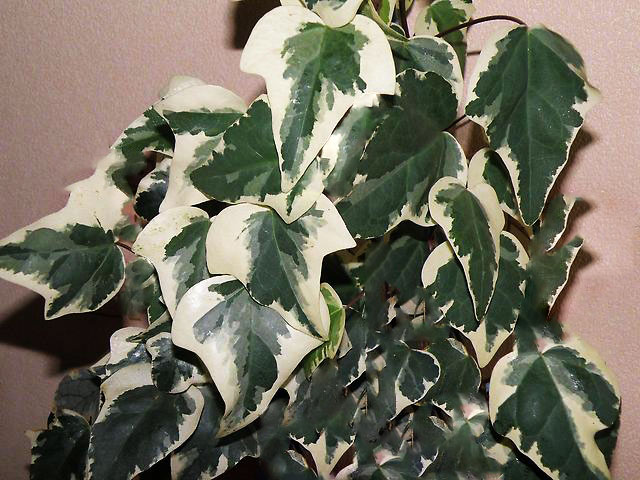
The Canary view is distinguished by the absence of aerial roots, so it needs good support.
Pastukhov ivy is rare. In representatives of this species on one bush you can find leaves of different shapes. The color of the plates is also ambiguous: the top is brighter, the bottom is dimmer. This species is listed in the Red Book of Russia.
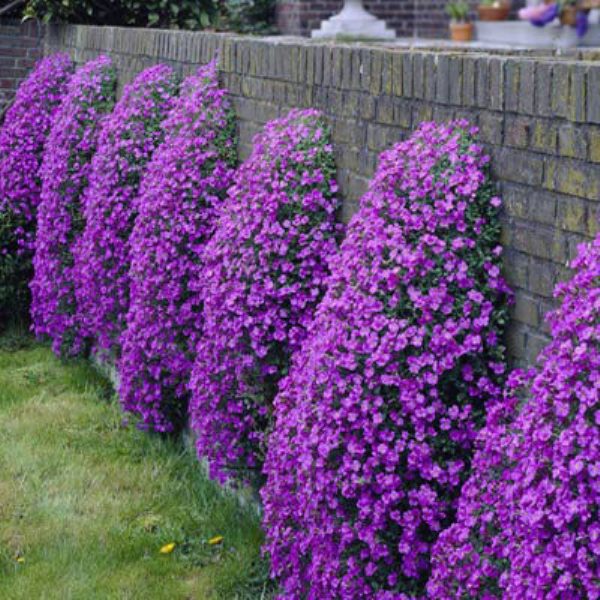 You may be interested in:
You may be interested in:Household Ivy Care Rules
Hedera is not a moody plant. Timely implementation of the necessary procedures for the care of the plant will allow you to enjoy the beauty of the decorative vine for many years.
Location and lighting
The plant does not like moving, so it is advisable to choose a permanent habitat for it. It is desirable that this was a place near the wall. This arrangement gives young shoots a lot of room for branching.
If the flower is grown as an ampel plant, it can be raised to high racks and shelves. Ampel flowers can also be grown in hanging flower pots. To weave a header, it is necessary to provide support to it. To do this, use a grid, a ladder and other similar items.
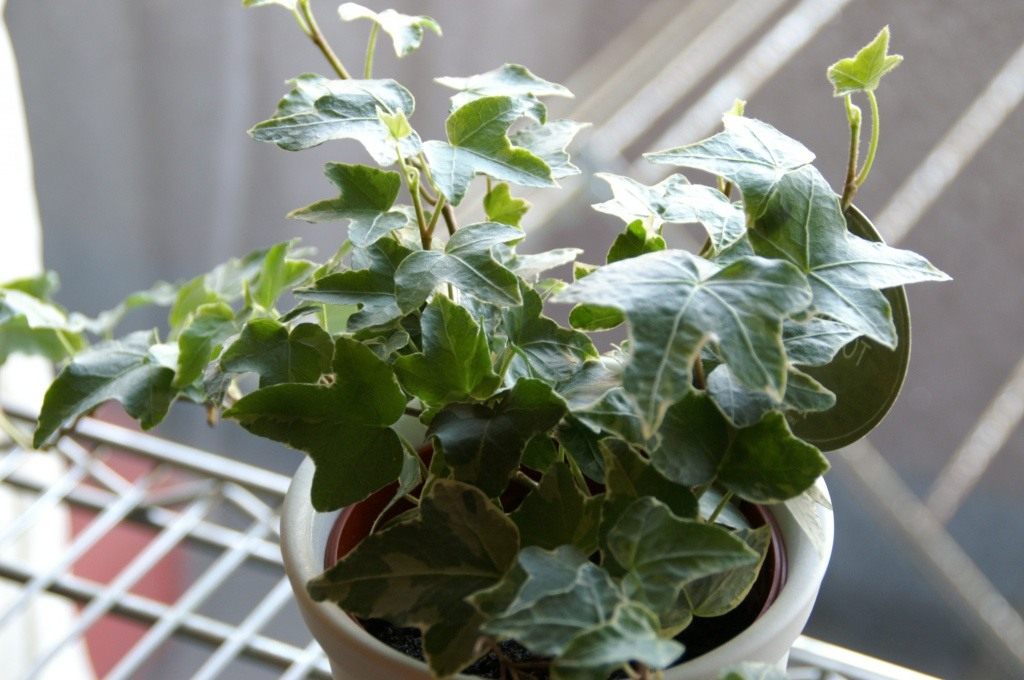
Lighting for the flower is selected based on its species. It is better for green species to arrange penumbra. They should be placed away from the window. Even keeping in the middle of the room is allowed.
Variegated species need bright diffused light. They are placed on the windowsills, whose windows face north, and also near the western and eastern windows. The south side is not suitable for growing ivy. There the plant can get sunburn.
Watering and fertilizer
In the warm season, the flower is watered moderately, but often. The topsoil should always be slightly moist. Waterlogging should not be allowed. The roots of ivy are spread on the surface, which increases the risk of rotting. In winter, watering is reduced. During dormancy, the plants in the topsoil provide an opportunity to dry out a bit.
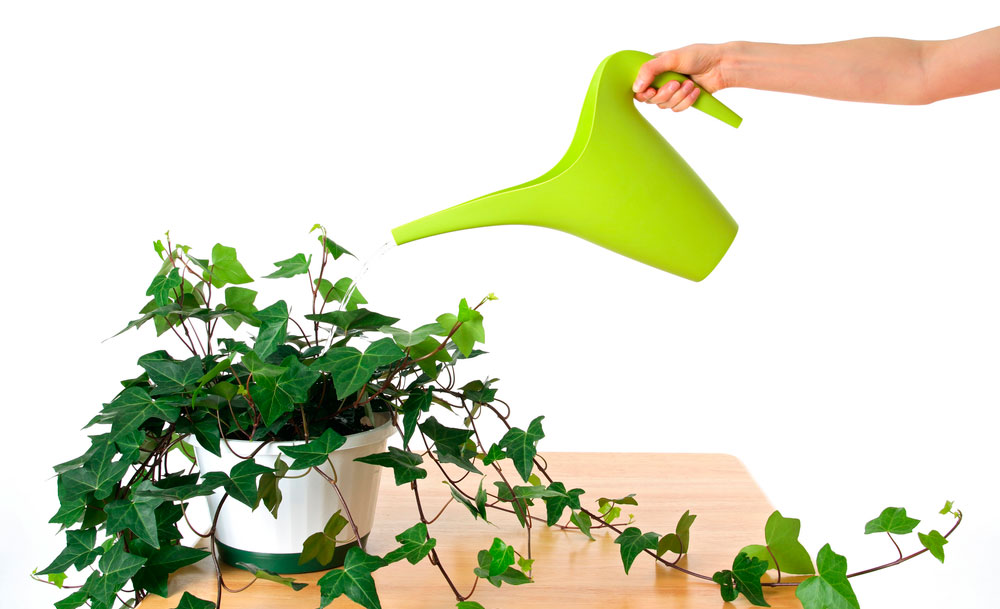
For irrigation use soft water at room temperature. In summer, the flower needs to be sprayed. Some gardeners recommend placing the header in a warm shower. The rest of the year, wiping the plates with a damp sponge is allowed.
Supplementation is administered every 2 weeks during active flower growth - from March to August. In September, the stimulation is stopped, as the ivy is preparing for hibernation. Mineral complexes for decorative and deciduous plants are well suited for the flower. In order for green leaves to become more saturated, fertilizers with a high nitrogen content are used.
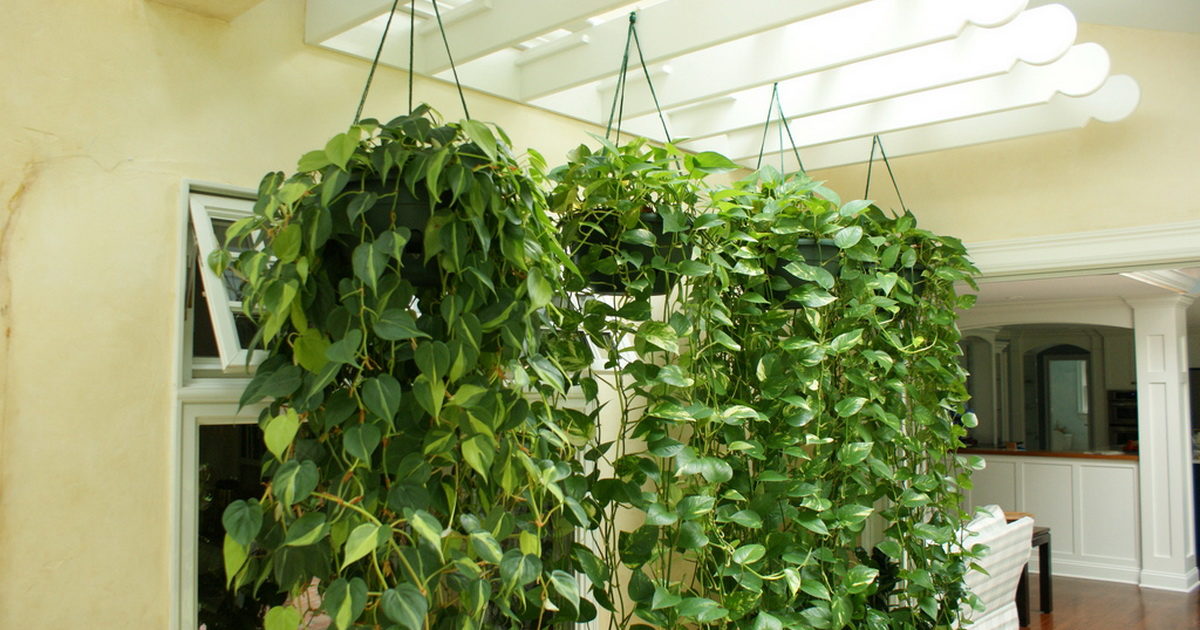 You may be interested in:
You may be interested in:Soil selection
The flower is not particularly capricious in the matter of choosing the soil, but most of all it feels most comfortable in slightly acidic soil. To prepare it, equal parts of the following components are mixed:
- turf land;
- sand;
- peat.
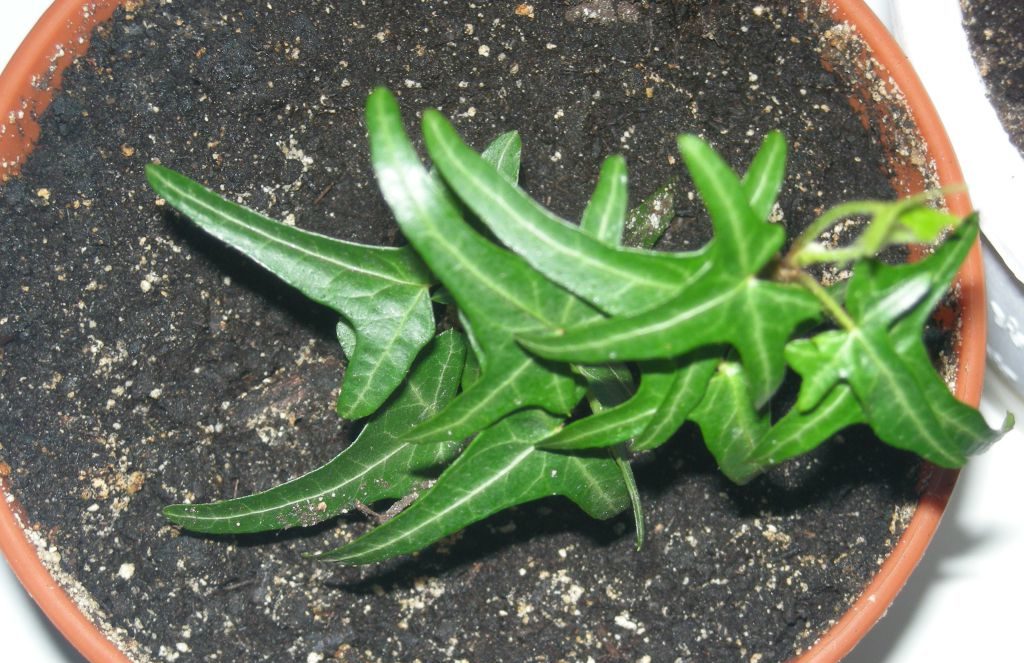
Soddy ground can be replaced with leaf or humus. Some gardeners recommend growing a heder in a universal soil mixture, which is sold in any flower shop.
A very important role is played by the correct selection of the flower pot. The roots of the plant are prone to rapid growth, moving to the sides. Accordingly, the pot should be shallow, but with a wide neck.
How to propagate and transplant a flower at home
Propagation of the flower occurs in four ways:
- by seeds;
- cuttings;
- shoots;
- layering.
The seed method of reproduction is difficult at home. Header seeds do not differ in good germination. In addition, with this method of reproduction, varietal characteristics of the plant are lost.
To form the cuttings, the apical shoot is cut. It is desirable that it already had aerial roots. The cuttings can be rooted in nutrient soil or water. As soon as he accepts and gives new leaves, he is transplanted like an adult plant.
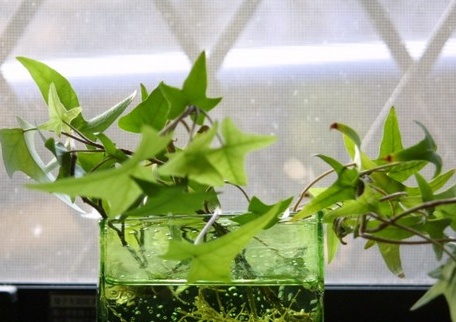
Propagation by shoots makes it possible to obtain several new plants from one stem at once. To do this, cut off any shoot with leaves. A small incision is made along it. The shoot is placed with the cut side in nutrient soil.
After some time, roots will appear along the entire stem. The stem is divided into several parts. The attachment point of each sheet is a potential growth point.
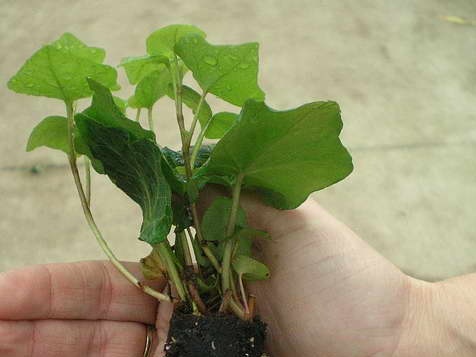
Reproduction by layering is very similar to the previous method. The difference is that the shoot is not cut and cuts are not made on it. Part of the stem is fixed in the soil using brackets. The top of the shoot is left in the air. After rooting, the stem is cut from the mother bush and divided into several parts, based on the consideration: each leaf is a growth point.
Possible difficulties in growing a houseplant
Growing a header, the grower may encounter some difficulties. These include drying, falling, or discoloration of the leaves, as well as infection of the flower with harmful insects.
Why do the leaves or the whole plant dry
If the plant begins to dry leaves, this should be taken as a signal of help. So that the ivy does not completely dry out, the hostess should reconsider the organization of care.
The first and most common cause of leaf drying out is lack of moisture. Header roots are located almost on the surface, so it reacts very sharply to the drying out of the upper soil layer.
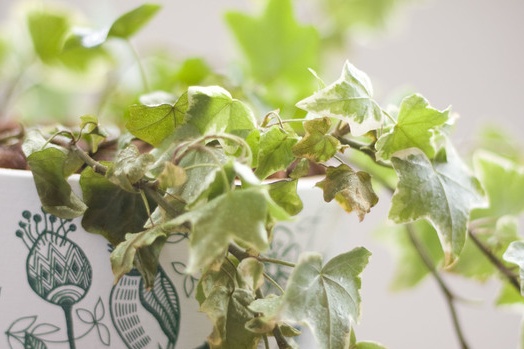
Dry air also contributes to the drying of the plates. A flower can also respond to a lack of moisture in the air with leaf fall.
Another cause of leaf fall may be a lack of light. Despite the fact that the flower belongs to the group of shade-loving plants, it still requires a certain amount of light.
Ivy can lose leaves for a natural reason - old age. Over time, in an adult plant, leaves fall at the base of the stem. This problem can be solved by anti-aging pruning.
Leaves fade or change color
Small leaves located far from each other indicate incorrect lighting. If such a flower is moved to a more sunny place, it will produce larger leaves, the interval between which will be noticeably reduced.
The leaves of the plant may turn yellow. Most often this happens for two reasons: waterlogging and excess fertilizer. As soon as watering and feeding are organized correctly, ivy will no longer turn yellow.
Variegated varieties of headers can lose the brightness of their color. Fading results from poor lighting. Variegated ivy, unlike dark green species, need more light. If they are kept in partial shade, they will lose their decorative color, turning into an ordinary green ivy.
An uncomfortable pot can also become the cause of the loss of a decorative pattern. The roots of the heder are prone to overgrowth, so in a cramped flower feels uncomfortable.
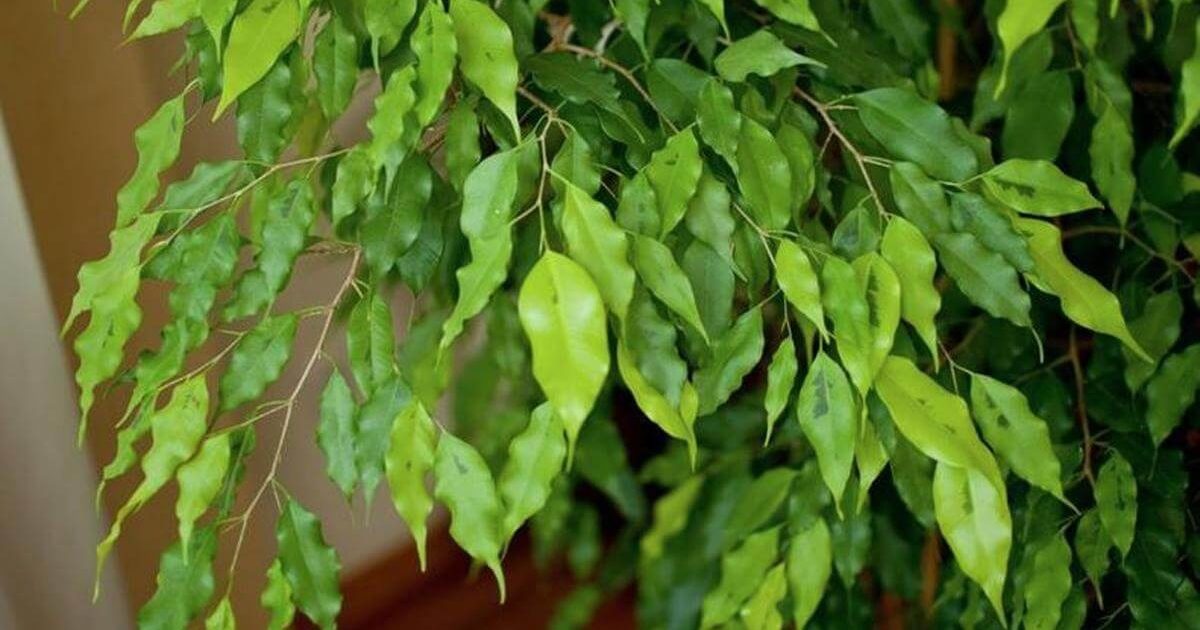 You may be interested in:
You may be interested in:How to recognize pests
A flower often falls prey to aphids, scutes, and spider mites. Pests can be identified by the following signs:
- Aphid. Dangerous pest eating plant juice.As a rule, attacks in whole columns. Infection of aphids can be determined by yellowing and withering leaves, as well as by a careful examination of the flower: small transparent bugs can be seen on the stems and petioles.
- Shield. A sign of infection with these pests is a growth slowdown and leaf fall. On the inner side of the leaf, you can see small wax dots - the waste products of insects.
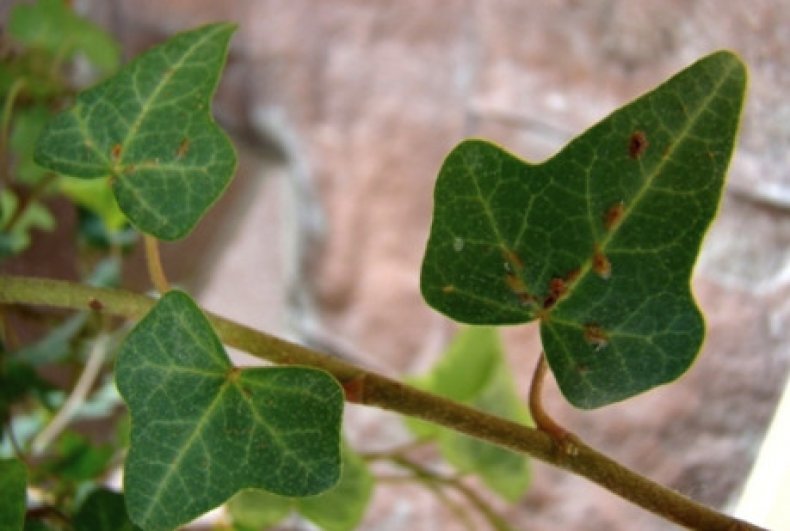
Leaf shields - Spider mite. The most dangerous pest that can kill a header in 2 weeks. It is almost impossible to notice a tick without using magnifying devices. But its thin cobweb, which the tick generously leaves on the petioles, stems and the back of the leaf, can be easily seen with the naked eye.
Is it possible to keep ivy at home and what omens say
With the cultivation of ivy in the house there are many signs and superstitions. It should be noted that they are very controversial.
Signs about the positive effect of the plant on households:
- If ivy grows at home, the relationship between households will be wonderful. The flower absorbs all negative, leaving only positive energy.
- The plant has a calming and relaxing effect.
- Ivy in the office contributes to career advancement.
- An unmarried girl who brought this plant to the house increases her chances of successfully marrying.
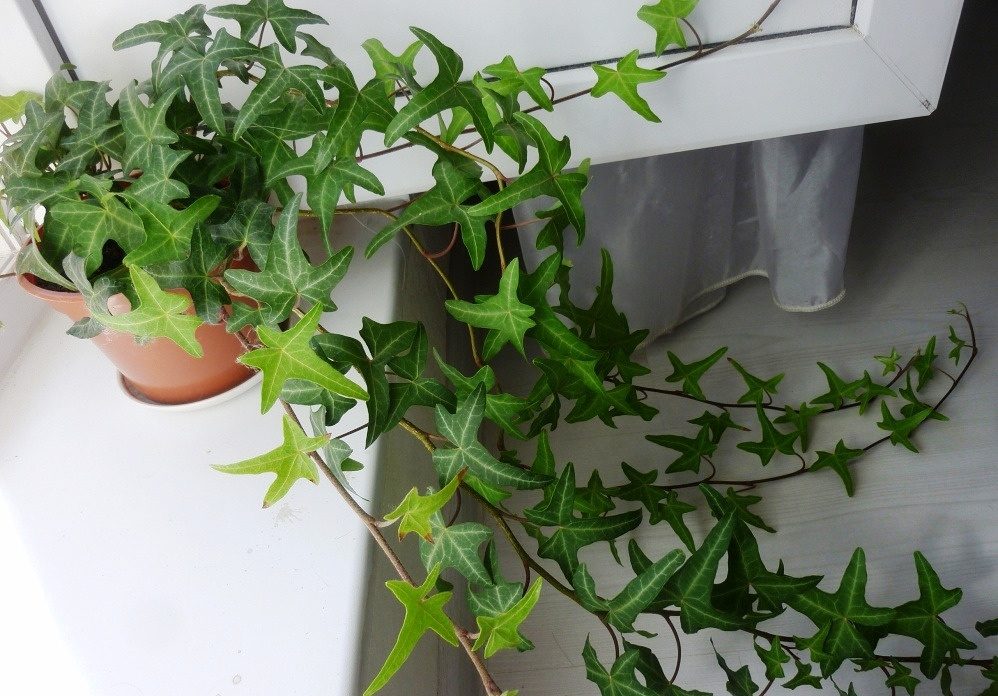
Signs about ivy - The flower that the man takes care of will protect him from future mistakes and troubles. It will also preserve the health and youth of its owner.
- Ivy makes timid people decisive. He is able to strengthen faith in himself many times.
- The plant will not allow dirty tricks in the house. If the guest has bad intentions, he will contribute to his exposure.
Signs and beliefs that are not advised to keep ivy at home:
- Ivy feeds on the positive energy of a person, weakening his biofield.
- A flower steals happiness from its unmarried mistress, not letting men in to it.
- The plant will drive a man out of the house, even if he is legally married to his mistress.
- A vine that has fallen off in itself promises major financial troubles.
- The plant in the bedroom leads to a loss of vitality.
- The flower has a depressing effect on its owners.
- Ivy can avenge his mistreatment.
Also, the plant is associated with mysticism and magic. It has long been used in magic. For example, with the help of ivy, the future husband and fate were determined. And in ancient Rome it was used as a magical tool for rejuvenation and attractiveness.
Common flower growing questions
Ivy is an evergreen liana that is highly regarded for its ability to quickly grow and braid supports. Caring for a flower is not burdensome, it will become a real decoration for both the living room and the office. Despite the fact that folk wisdom expresses an ambiguous attitude to this plant, it lives in many houses to the delight of the owners.

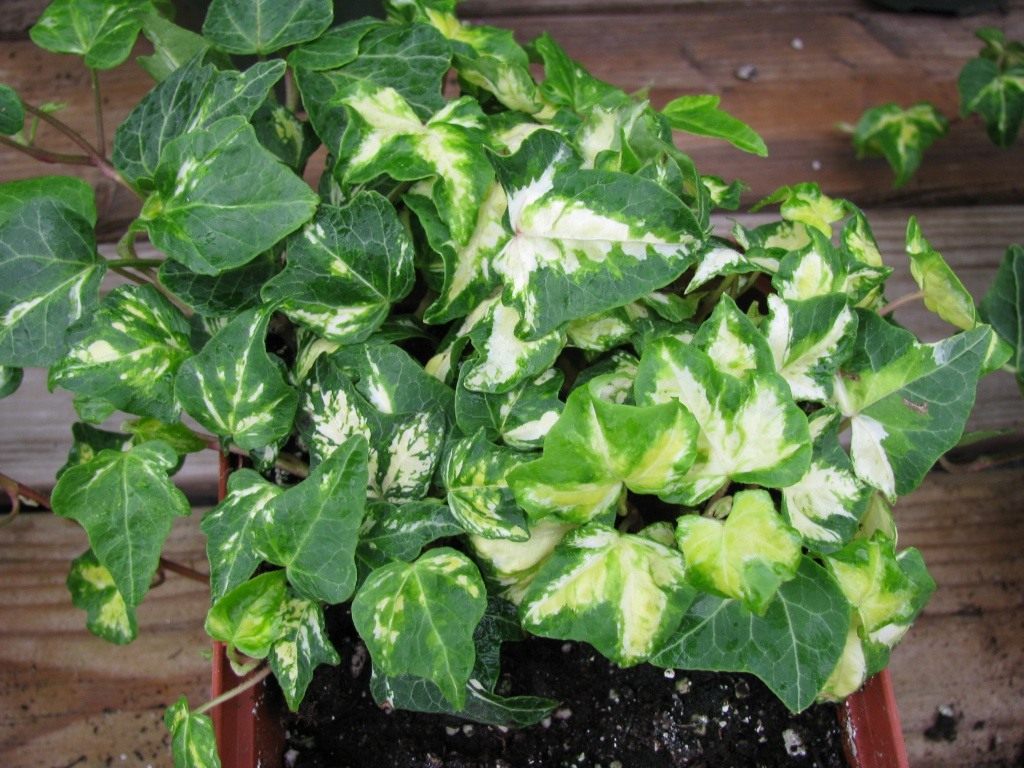
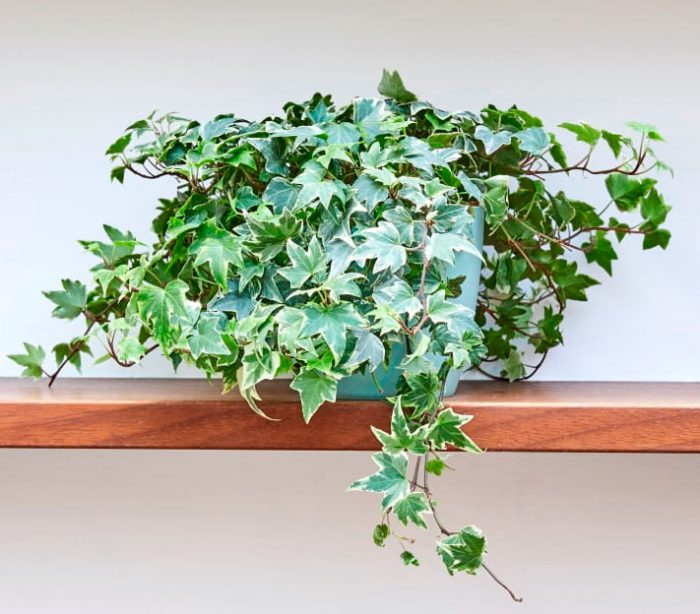
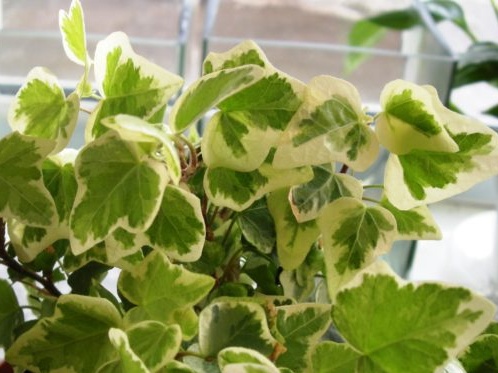



 Sow in the ground, without seedlings: 10 beautiful and unpretentious flowers
Sow in the ground, without seedlings: 10 beautiful and unpretentious flowers Platicodon planting and outdoor care
Platicodon planting and outdoor care Hosta - planting and care in the open ground in the Urals
Hosta - planting and care in the open ground in the Urals Oleander - care and growing at home
Oleander - care and growing at home